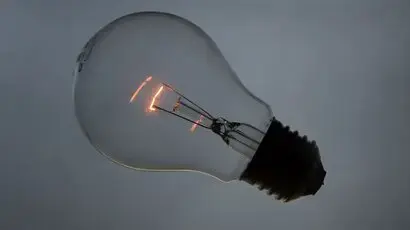
Get your free Melbourne Electrician quote today!
Our team of Melbourne Electricians is here to help you with any questions or concerns you may have. We’re committed to providing you with the best possible service and support.
Your lights are flickering, it likely means there’s an underlying electrical problem. Discover the possible causes and actions you can take to fix flickering lights.
Have you spotted your lights flickering or dimming unexpectedly? Perhaps when you flick a switch, the light starts blinking without explanation. Occasional flickering might not seem like a big deal. But if it persists, it might indicate more serious electrical problems that need addressing sooner rather than later.
Though flickering might seem minor at first, ignoring it can let underlying problems get worse. Often, it’s linked to loose wiring, worn insulation, or overloaded circuits—issues that can hide among walls, equipment, or the lines bringing electricity into your home.
Ignoring flickering lights can lead to bigger problems, like electrical fires or dangerous voltage surges. Picture needing your lights most and having them fail—a nightmare, right? Address these warning signs swiftly to prevent such outcomes.
Spotting and tackling the causes of flickering early on is vital. By diagnosing and fixing flickering lights before significant damage occurs, you can dodge expensive repairs and ensure your lights remain reliable. This approach alsohelps prevent major electrical emergencies. Keep reading to discover common reasons for unexpected flickering and practical steps to address them effectively.
What Triggers Lights to Flicker?
Several different factors can cause flickering lights, including:

Take Flickering Seriously to Avoid Costly Damage
While flickering may seem minor, the root causes often signify larger issues within the entire electrical system. Ignoring persistent flickering, such as from a loose bulb or faulty dimmer switch, leaves potential safety hazards unchecked within walls and the utility lines feeding your building. This puts occupants at higher risk of electrical fires, shocks and electrocution.
Can flickering lights signal problems with wiring or surges that strain components like LED bulbs? Beyond safety dangers, unchecked electrical problems cause progressively destructive damage the longer they go unaddressed. Flickering frequently arises from wiring faults and surges that stress the home’s electrical system.
If left undiscovered, this added stress slowly degrades the system, eventually leading to complete fixture, appliance and equipment failures. Yet a single burned-out transformer or motor can cost thousands in repairs and replacement.
Catching and correcting minor flickering problems promptly before they escalate into significant breakdowns ultimately prevents costly electrical repairs—schedule inspections by licensed electricians at the first sign of unexplained flickering. Safety and savings start with proactive electrical maintenance.
Don’t sit back as the lights dim and brighten sporadically. Identify the root causes triggering flickering so experts can eliminate them. Need help with your lighting? OurMelbourne emergency electricians are here for you day and night.Give our experts a call today!
Published by: Pascal Harb17 October 2025